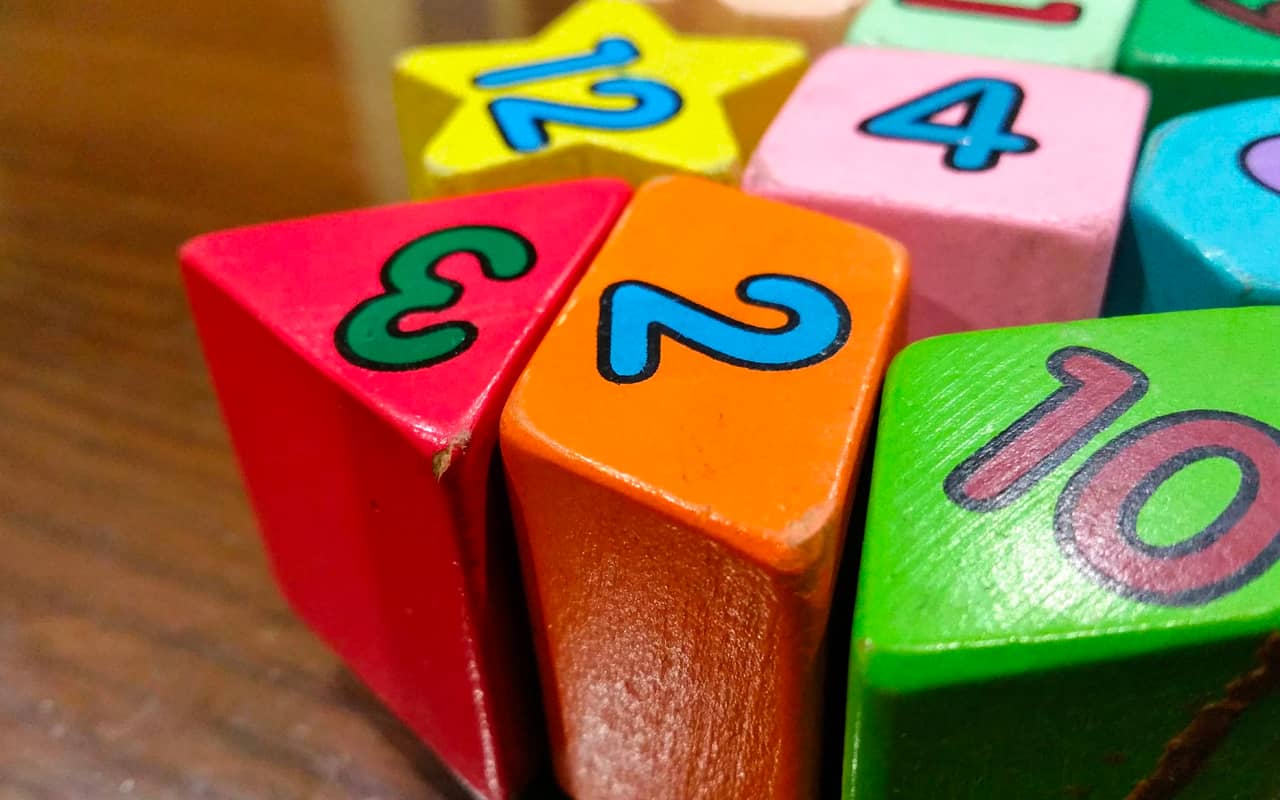
The fondness people have for it may have to do with the importance of Euclidean geometry.
It’s like carrying around a piece of the truth in your head.
It’s also a transcendental number, and if you’ve ever memorized a long piece of content, you know just how transcendental that can feel.
Further down on this page, I’ll show you a video of one of my students experiencing that transcendental feeling. You can watch him recite 100 digits of pi and receive tons of applause at the end.
I’ll introduce you to another one of my students who memorized 1200 digits of pi and established a memory record.
But more importantly, I’m going to show you exactly how to memorize pi for yourself.
Let’s dig in.
How to Memorize Pi in 6 Steps
When it comes to memorizing pi, most people will need two kinds of mnemonic devices working in tandem:
- The Memory Palace technique
- An alphanumeric system for coding the digits of pi
There are good and bad ways to create a Memory Palace.
For pi, I suggest you focus on the most highly optimized Memory Palace you can create by getting the best possible guidelines.
You want clear and distinct journeys and may need to practice with other numbers to figure out exactly what works best for you.
For example, some people need lots of space, even for small units of information like numbers.
Other people can compress information into incredibly small spaces. We’ll talk more about this in a moment.
Either way, rest assured anyone can do it. From Akira Haraguchi who did memorized a large sequence of pi in Japanese to my student Marno Hermann who learned 1200 digits of pi very quickly and recited the sequence in two different languages, the examples are out there.
Listen to Marno discuss how he accomplished his feat and broke a memory record in his area on the Magnetic Memory Method Podcast:
Now that you know it’s possible, here are the steps you’ll want to follow so that memorizing pi is easy and fun.
Step One: Choose Your Systems
As I just mentioned, you’ll want a Memory Palace. You might want more than one depending on how many digits of pi you want to remember.

In terms of alphanumeric systems, there are a few to consider:
- Major System
- Dominic System
- The Shadow (discussed in-depth with Braden Adams)
My preference for numbers?
A Major-based PAO System.
It lets you have an image for each 2-digit pair from 00-99.
You can also develop 3 and 4-digit images if you wish, using examples given in the Number Dictionary of Dr. Bruno Furst.
Step Two: Develop Your Number Mnemonic System
All of these systems have in common the making of words that help you memorize numbers.
For example, 84 in how I use the Major System for a 00-99 PAO is “fire.”
The trick is to make sure that your associations aren’t just generic words. For that reason, I actually think about Chuck Norris with a flamethrower.
That way, true to the PAO, the image is a person engaged in an action with an object (Person Action Object). For more examples, see an entire 00-99 PAO on my pegword method training page.
Three: Practice Your Number Mnemonic System
Learning to place numbers in a Memory Palace takes a bit of experimentation.
My preferred way to memorize numbers is in 6-digit blocks, layered in columns. Like this:

This pattern of stations can be reproduced throughout any room multiple times.
Of course, we’re not placing numbers when memorizing pi. We’re placing associative imagery that helps us remember the numbers.
For me, these images are:
31 = Mad magazine mascot
41 = Rat (Splinter from Ninja Turtles)
59 = Jennifer Lopez
26 = John Nash
53 = Lamb
58 – Liev Schreiber
97 = Pacman
93 = Pam
23 = Rambo
Now, you don’t want to just lay these images out and have them sitting there doing nothing.
You want them to interact. This means that the Mad mascot is going to bite Splinter, who is going to kick Lopez. On the next line, John Nash does something to the lamb who then does something to Liev Schreiber.
Some people prefer the actions they choose to link with the Major System. For example, they might have “writing” as the action for 41 instead of using an image like a rat. The mascot would write on an object like a loop.
Personally, I find that way of using a PAO system far too slow and complicated. I like to have clear, direct, concrete associations that themselves can do any action I please to make it easy to remember who is acting on who.
The more you practice, the more you’ll develop your own preference.

Step Four: Choose Exactly How Many Digits For Your First Go
In my experience, most people start with the first 100 digits of pi.
It’s not too much when you look at it:
3.141592653589793238462643383279502884197169399375105820974944592307816406286208998628034825342117067
You only need a small Memory Palace to do it. And that’s how yet another of my Magnetic Memory Method students, Paul Deery, approached the task.
Check out Paul’s pi memory demonstration:
Of course, you don’t have to make the first 100 digits your goal. You can work on 10 or 20, or any number you wish.
If you’re feeling more ambitious, you can try and break a record like my student Marno Hermann. He memorized 1200 digits and discusses his process before and after using the Magnetic Memory Method to commit it to memory.
Step Five: Review
To remember pi over the long term, you’ll want to follow a process of review we call Recall Rehearsal in our community.
For pi, it’s a simple matter. Go over your associations as many times as it takes for them to enter long term memory.
The clarity of your Memory Palace journey matched by the strength of your associative imagery will be key.
I suggest that you pull the associations from memory without the aid of notes or looking at Anki cards, etc.
Such activities violate active recall and lead you to rote learning.
Anyhow, if you’re looking for a strict answer on how many times you have to repeat pi, I can’t give one. To understand why, you need to pull back for the bird’s eye view. Here’s the real deal when it comes to my “Magnetic” repetition rules:
Remember Pi? It’s A Breeze!
As you can see, there’s nothing particularly difficult about memorizing pi.
If there’s anything people struggle with, it’s these points:
- Optimized Memory Palaces
- Settling on a system
- Experimenting
I’ve been teaching memory techniques for a long time and those are the trends I’ve seen.
The solutions are simple:
Pick one of the systems. Take number memory tests based on pi. Don’t overthink it. You can change later.
Then, just dive in and experiment. We all must in order to learn memory techniques.
And if you need help with the process, make sure you register for my free course on mastering all of the areas where people struggle.
I’ll take you through each and every step you need to succeed.
And before you know it, you’ll have memorized pi as deep into the sequence as you wish.
When you do, I hope you’ll stop by and let us know how your success feels!
Related Posts
- 1200 Digits: How to Memorize Pi And Recite It Live
Marno Hermann currently holds the top spot on the Pi World Ranking List. Learn how…
- How to Memorize a Map: A Proven Process Anyone Can Use
Maps are an interesting way to create a Memory Palace plan for storing and retrieving…
- 1200 Digits: How to Memorize Pi And Recite It Live
Marno Hermann currently holds the top spot on the Pi World Ranking List. Learn how…




